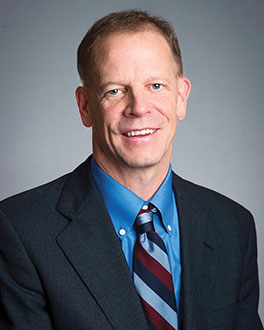 When the resident call light turns on at senior living communities, some states require that staff respond within 15 minutes of the call.
When the resident call light turns on at senior living communities, some states require that staff respond within 15 minutes of the call.
Brandy Scheer, executive director of Heritage Woods of Minooka, a Gardant assisted living community in Minooka, Ill., said her community’s goal is to reach them within 10 minutes, “and often, we proudly are responding in just a few minutes,” she said.
That’s just one example of improved care that comes from participating in the AHCA/NCAL National Quality Award (QA) program. The program is steadily gaining in popularity, boosting the reputation of those communities that have achieved awards as the industry maintains its impressive rebound in performance and consensus since the pandemic.
NCAL’s Director of Quality Improvement, Pamela Truscott, DNP/HSL, MSN/ED, RN, said recently that interest and participation in the program are up by four times compared to this time a year ago.
Scheer said the program helped her staff learn they perform better when more people are involved in the overall process of care. Heritage Woods is one community within Gardant’s portfolio, which operates 80 properties, mostly in Illinois, Indiana, and Ohio. Gardant set out to achieve these quality improvements through the QA journey in 2019 and today has earned 62 Bronze and four Silver awards. Two of the Silver communities are currently working toward Gold, the program’s most prestigious honor.
Julie Simpkins, co-president, Gardant Management Solutions, Bourbonnais, Ill., said the program’s criteria have helped to fill gaps, address pain points, and serve as best practices for how the company manages its communities.
“The criteria are aligned with continuous quality improvement and demonstrate specific approaches that improve health care outcomes for those we serve,” she said.
A recent independent study by Brown University examining a Silver or Gold QA from 2018-2020 confirmed that there’s a greater than 5 percent lower relative risk of emergency department use for awardees vs. non-awardees.
The study examined five outcomes: any inpatient hospitalization; any ambulatory care sensitive hospitalization; any emergency department visit; any injury-related emergency department visit; and any long term nursing home transition. It excluded emergency department visits and hospitalizations that occurred while residents were in a nursing home.
Continuously Moving From Good to Great
Sarah Silva, president, Arete Living, Tigard, Ore., said the program is a continuous growth path for those trying to move from good to great. Arete has 26 communities, and since 2013, 22 have been awarded Bronze and seven Silver awards.
“The application process involves participation and input from every level of the organization, from the front-line workers to the leadership team,” Silva said. “During the process, you hear from everyone on your staff. They offer new ideas. This is often where the best ideas come from. It helps communities to cultivate best-in-class operations. The process makes you better.”
Scheer said the program puts an extreme focus on measurement and processes, and “pulls the whole team together to improve overall satisfaction. It improves our monitoring of our measurements by making us more aware of them and we run performance reports more frequently. We learn what we’re doing well and what we need to improve on.”
Silva said she’s seen an “incredible advantage” for her leadership teams when participating in the application.
“It’s the largest leadership development opportunity I’ve participated in during my career,” she said.
Once Bronze is reached, communities can seek to obtain Silver.
“A lot of that is doing what you did for Bronze, except at a higher performance level,” Silva said. “Obtaining Gold is an incredible achievement. Only one or two communities reach it per year. It usually takes several attempts to get there. We will one day.”
Quality Embedded in the Culture
Staffing is always a challenge, but by working towards these quality goals, “it is built into your culture in a positive way,” Silva said. “Communities that participate in the process tend to have lower turnover and more stability overall.”
Silva said one key performance indicator (KPI) she tracks is the number of patient falls, which can lead to hospitalizations. Her communities document the number of falls and what caused them and examine if they could have been prevented. The team then contrives an action plan to reduce them.
“Once the plan is in place, it is monitored, reviewed, and tweaked, as necessary,” Silva said. “You discuss it, and you learn from it. This action-plan approach to solving problems and improving is a constant cycle and can be used for anything that is being evaluated. The strategy is embedded in the culture.”
Silva said when her communities achieve Silver, “This truly shows how committed you are to serving your residents. It’s a very powerful message to prospects and their families.”
Truscott said these awards go a long way in attracting and retaining staff and residents.
Simpkins agreed that resident prospects and employees want to live and work in communities that operate at a high level of quality. “If you call a Quality Award-winning community home, you are living in a community that embraces quality improvement and exceptional health care outcomes,” she said.
Even better, Simpkins said achieving greater efficiencies with a focus on quality does not necessarily incur additional costs and contributes to staff retention. The Quality Awards fit perfectly into Gardant’s mission, which is ‘Leading the Way.’
“Leading the way means guiding and inspiring others toward a common goal,” she said. “Our mission also includes inclusion and innovation. Striving towards a quality award fosters innovation in the workplace. It also develops problem-solving, leadership, and creativity.”
 Silva said, as for consensus, “We’ve been working for three-plus years to get back to where we were five years ago. We’re not there yet but are getting closer, and the QA program is a reason why.” Becoming an awardee comes down to your executive director and administrator driving the quality, she said.
Silva said, as for consensus, “We’ve been working for three-plus years to get back to where we were five years ago. We’re not there yet but are getting closer, and the QA program is a reason why.” Becoming an awardee comes down to your executive director and administrator driving the quality, she said.
“There’s been a loss in those two leadership roles in our industry in recent years,” Silva said. “Many have left or retired and fewer are choosing this as a career. The QA program is a leadership program at its finest.”
Paul Bergeron is a freelance write based in Herndon, Va.